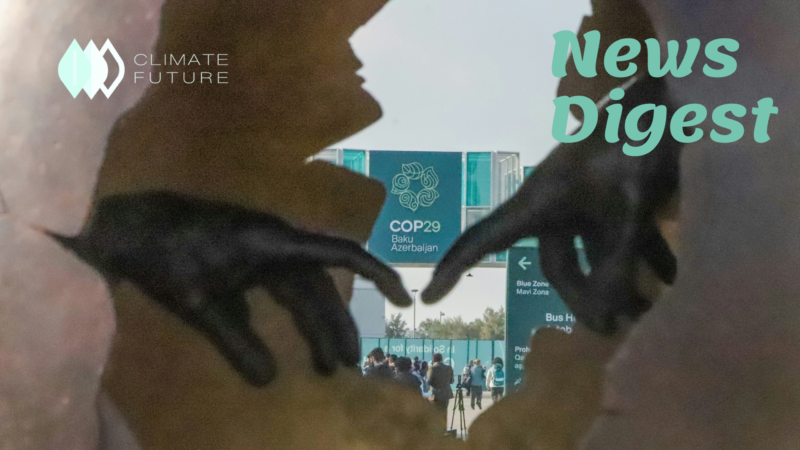Put women’s rights ‘front and center’ of climate policies: Bachelet
Countries are reviewing the grave issue of violence against women as part of the Council’s annual full-day discussion on the women’s rights. Ms. Bachelet mentioned how the climate crisis can cause women’s lives in danger, whether they are speaking out against the global emergency or fleeing disasters. She highlighted the critical need for greater action. Women consist of 80% of people uprooted by climate change by citing the UN Environment Program (UNEP). Displacement leads to a much bigger risk of violence, including sexual violence. The rate of rape case among displaced women to trailer parks rose almost 54 times the baseline rate in the Mississippi State this year. Nepal also experienced a four-fold increase in trafficking after the 2015 earthquake. Moreover, when climate change affects agriculture, the socioeconomic factors impact women and girls, causing them more vulnerable to threats such as domestic violence, trafficking, forced prostitution and early or forced marriage. Displaced women who identify as LGBTQ+ are more likely to face the high risk of violent abuse. The environmental rights defenders around the globe are working to protect the communities, land, water and nature which can have a great personal risk. Most importantly, governments must take immediate actions to protect, respect and fulfill their human rights obligations to women and girls, especially to women environmental activists.
Guterres outlines four recommendations to help us all ‘Save Our Ocean’
Mr. Guterres outlined four recommendations at the high-level opening of the Conference to ensure that the tide is reversed. Among them, the UM chief emphasized the urgente need to invest in a sustainable economy that depends on the sea. By highlighting the ocean connectivity, Secretary General Guterres said that as we have taken the ocean for granted, we face an “Ocean Emergency” today and the tide must be turned. At the last UM Ocean Conference in New York five years ago, delegates called to reserve the decline in ocean health. Some progresso has been made since then and the UN chief maintained with new treaties being negotiated to solve the global plastic waste crisis that is destroying the oceans and advances in science, in line with the UN Decade of Ocean Science for Sustainable Development (2021-2030).
Exploring the largest ocean reef restoration project in the Americas: ‘One Million Corals for Columbia’
Local experts, scientists, passionate activists and islanders are sounding the alarm about the recovery of one of the richest ecosystems in the Caribbean Sea, even though they work together on innovative methods to restore it. Marine Biologist Elvira Alvarado is racing against the clock since the resources are limited. She has eight days to plant 13,500 fragments of coral and she is training a group of young volunteers how to do it. Ms. Alvarado and her peers have been restoring coral reefs for decades and she has joined a nationwide effort: “One million corals for Cambodia” now. Last year, the Columbia Government launched the commitments made in the context of the UN Decade of Ecosystem Restoration. That aims to grow one million fragments of coral and restore 200 hectares of reefs by 2023 which is the largest effort on the American Continent. There are more than six thousand coral species around the world and Columbia is the home for at least 80 of them. The most popular technique to restore and grow corals is micro fragmentation. The Million Corals for Columbia project gave the message that in ecosystem restoration, like other efforts to reach a sustainable world, unity is power. Allies in the force to save the planet can range from scientific experts to diving schools, local communities, fishermen who work as coral gardeners and even hotels.
UN plan calls for real progress towards ending internal displacement crisis
The plan outlines 31 commitments by the UN system to resolve, prevent and address internal displacement in a better way and calls for action from countries, the private sector, international financial institutions and others. The Action Agenda builds on a 2021 report by a high-level panel gathered by the Secretary-General to identify concrete recommendations towards solving the initial displacement crisis. In May, the International Organization for Migration (IOM) reported by citing the latest Global Report on Internal Displacement (GRID) that 59.1 million people were displaced within their countries last year which is 4 million more than in 2020. Many have been uprooted for years or even decades. Others have been forced to migrate more recently. The Action Agenda calls for the UN and partners to make major changes to how they work together to achieve real progress. The three objectives to help internally displaced persons (IDPs) are to find durable solutions, to prevent future displacement crises and to ensure stronger protection and assistance for the ones who are currently facing displacement. Some of the UN’s commitments include making more efforts to ensure greater inclusion of IDPs, as well as community members, in decision-making on solutions. The UN also plans to address displacement more systematically under its work on climate change. It will work together with national and local authorities to ensure displacements are part of disaster-risk reduction policies and plans.
‘Surprise’ early heatwave in Europe, harbinger of things to come
The intense heat wave made its way from North Africa, according to the World Meteorological Organization (WMO). The UN agency explained that an Atlantic low-pressure system between the Madeira and Azores is fueling the warm front, intruding towards western Europe. Although it’s only mid-June, temperatures in some parts of France and Spain are more than 10 degrees Celsius which is 50 degrees Fahrenheit higher than the average of the time of the year. In France, the heat spike covers the country’s warmest and driest May on record. In Spain, temperatures reached 40 degrees Celsius in parts of the country’s interior on consecutive days in June. In Switzerland, the maximum temperatures are above 30 degrees Celsius. According to the findings from the national weather service, the temperature difference between towns and the countryside was as much as six degrees Celsius. In Western Europe, drought warnings have been a major concern since no significant rainfall is predicted in Europe in the coming days, apart from isolated thunderstorms. The WMO said that large areas from southeastern Central Europe to northwestern Black Sea are suffering from drought as well.



